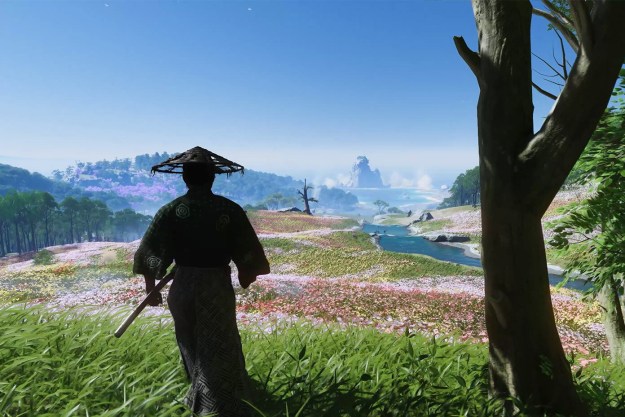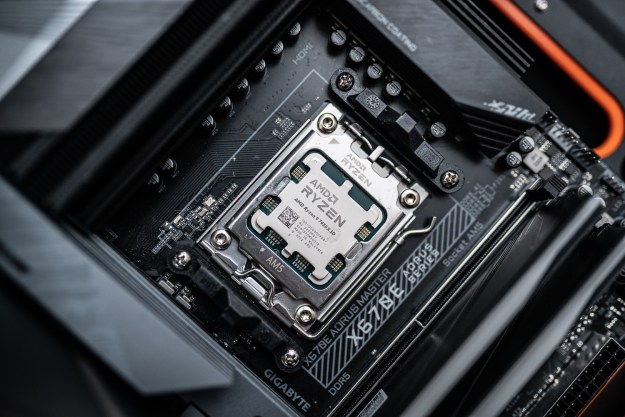
All of the hype and flash of E3 serve the Battlefield series well. These are big games that embrace an epic scope, and the multiplayer-focused Battlefield: Hardline reveal (and beta launch) fit the equally epic scope of the show perfectly. But let’s not forget: This is a Visceral Games effort. Battlefield isn’t just trading war in for cops and robbers, it’s doing that with the storytelling chops of the team that brought you the Dead Space series behind it. What does that even mean in the context of a franchise that’s always embraced a multiplayer-first approach?
“What we’re really doing at the top level is focusing on people over plot.”
“Bring a new perspective to the franchise,” Papoutsis told Digital Trends in answer to that question at E3. “What we’re really doing at the top level is … focusing on people over plot. A lot of the shooter games that have existed in the past are generally about a giant war that needs to be averted or a crazy Russian general that’s trying to dominate the world. The stakes are so incredibly high that it never gets to the personal level.”
“[In Hardline,] we want the characters in our campaign to have texture and great dialogue and behave in a more relatable way. Not just make it about how the world’s going to end; it’s more about what’s happening to these characters.”
Pulling this off requires a significant change to the way Battlefield games have traditionally worked in the past. For starters, the playable heart of the story is no longer merely a cipher. In Hardline, Visceral does away with the series-standard silent protagonist completely, giving him a voice for the first time. Little is known of the actual story at present, but Papoutsis readily admits how vital it is for the main character to actually speak out loud in this new outing.
“We even recognized that in the Dead Space franchise. We had Isaac in the first game and he didn’t speak. As an evolution of just the character … we want to hear what this guy has to say, we want to know what’s going on in his head. He’s seen all these traumatic things, it would be interesting to hear him speak. So we made that change in Dead Space, and we learned a lot over the course of that franchise,” Papoutsis said.
“In this game, absolutely, our protagonist definitely speaks. It’s important. You don’t watch a TV or a movie and have the main hero not speak. It’s just odd. There’s something to be said [for an approach where] people like to imagine that they’re that person, and that’s why they’re not speaking. But as a studio trying to deliver a story, we think it’s important that they do speak.”

Visceral is also putting more thought into the overall structure of the story. Papoutsis, a self-admitted fan of crime fiction, looks not just to movies like Die Hard and Pulp Fiction, but to TV like The Wire as well as he works with the team to guide Hardline‘s vision. Serial, longform narratives are all the rage on the small screen these days, and that particular approach to storytelling falls more in line with the 6+ hour experience of playing through a story-driven shooter than a movie does.
“In terms of production values and approach, [we want to] really lean into that concept [of] what we’re calling our TV-style presentation.” For instance, picking up a game of Hardline will greet you with a familiar “Previously on” segment that brings you up to speed on where you were in the story when you left off. There’s hope that the characters will be textured enough, memorable enough, to keep players on the hook; these “Previously on” clips are merely there to ensure that the story is brought to the forefront every time there’s a break between play sessions.
Multiplayer in Hardline isn’t anchored to the story, but Visceral has ideas for letting the thematic cops-and-robbers flavor seep into online showdowns. For starters, a faux-news feed will set up online showdowns before they begin. The gameplay supports the fiction as well, with new features like the ability for passengers to lean out a car window, gun in hand, and new gadgets like the grappling hook and zipline. There’s even a way to subdue and interrogate enemies, a new feature that feels lifted more from The Shield than traditional FPS fodder like Blackhawk Down.
“If you do a non-lethal takedown — so you get behind somebody and take them down or handcuff them — you can interrogate them when they’re on the ground. What that does is, it reveals the location of their squad members on the minimap,” Papoutsis explains.
“But it also creates some risk-reward gameplay, because obviously if you take a guy down and you stand over him and start interrogating him, it opens you up to get shot. But also, from the other side, they can take their friend down at that point because they don’t want him to squeal.”
Think of this interrogation mechanic as a complement to Battlefield’s dogtags. In previous games, a stealth melee kill earned the player his or her opponent’s dogtags as a sort of trophy. Hardline features some fresh take on that, in addition to the interrogations. “We have something similar to dogtags that we don’t have in [the beta] right now, and we’re not yet talking about,” Papoutsis said. “But yes, there’s certainly going to be something that fills that gap, because I think people really like it. It’s fun, but it’s going to be more fictionally appropriate.”
Editors' Recommendations
- New Battlefield gameplay trailer reveals more features, calls back to old titles
- Everything you need to know about Madden NFL 20







